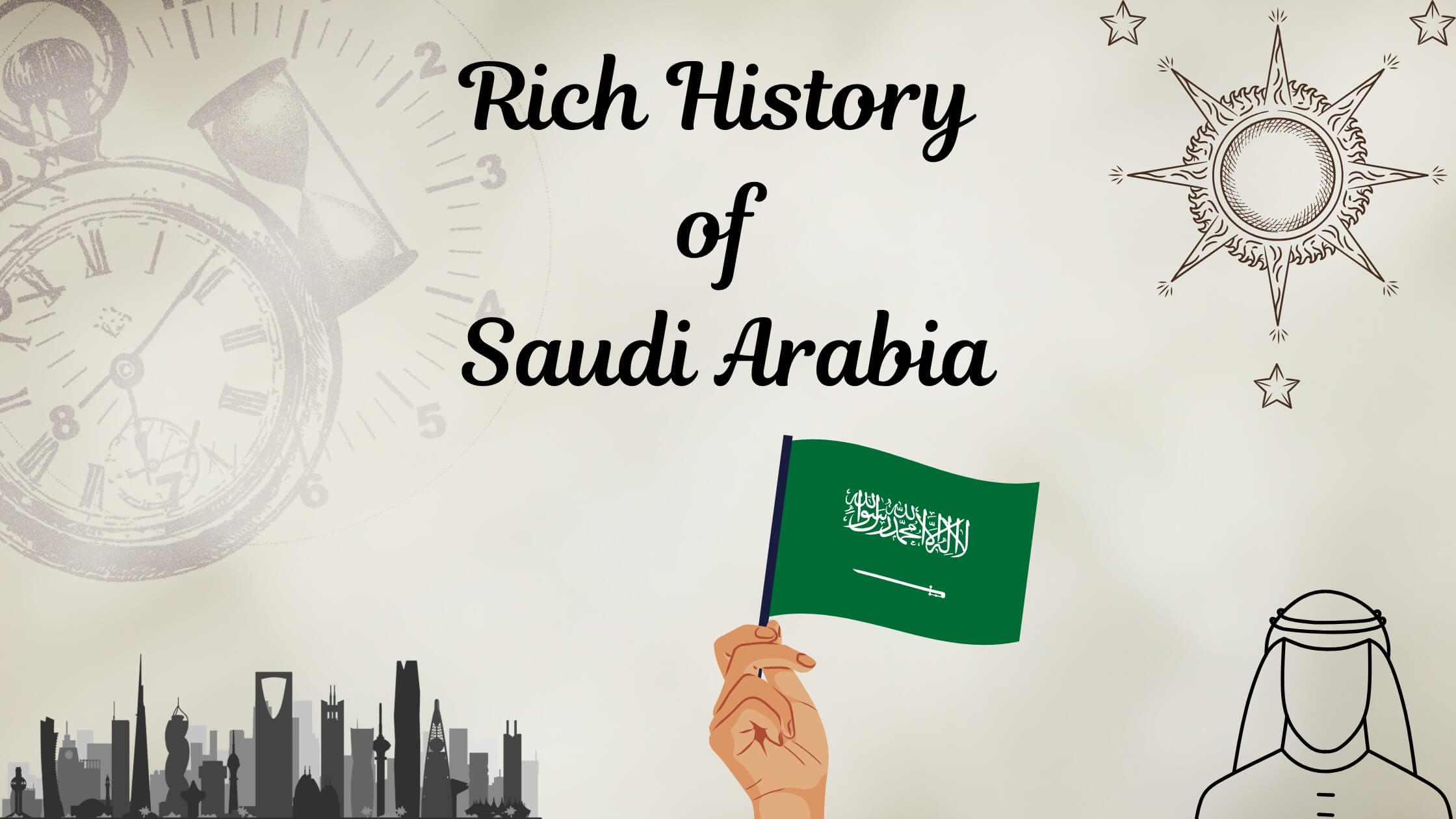Saudi Arabia, a country that is associated with vast deserts and modern marvels. Its rich history goes much further and is more complicated than you might assume. Even some research shows that human presence in the Arabian Peninsula dates back thousands of years.
This post will go through the history of the Arabian Peninsula, especially the Kingdom of Saudi Arabia. From the pre-history of a few thousand years up until today, we will track its tale from the first civilizations and the arrival of Islam to its modern kingdom state. This history helps us understand their legacy and what we can expect from them for upcoming times.
Ancient civilizations of the Arabian Peninsula
The Arabian Peninsula had been the center of a lot of things before the birth of Islam. Different societies reinvented themselves around their ways of life. The earliest settlements demonstrated how people lived in harmony with nature. The area was ruled by multiple kingdoms, with each making its reign significant.
A particularly significant crowd here were the Nabataeans, who were masters at the art of trade. They were known to operate around what is now present in Saudi Arabia and had a major effect on trade routes. Southerly, the Himyarite kingdom was also vital. These ancient people had a hand in the globalization of what we know today as Saudi Arabia.
The Prophecy of Prophet Muhammad (PBUH) and their era
The story of Islam emerges in Makkah, a city located in Saudi Arabia. Prophet Muhammad (PBUH) was born here, and it was here that He received initial revelations from Allah SWT. In Mecca, early Muslims faced some extremely challenging times, including facing persecution. The faith of the new Muslims confronted the old ways of the city.
In the history of Saudi Arabia, the era of the Prophet Muhammad (PBUH) and later played a crucial role. Do you know that the Prophet (PBUH) started the first Muslim community in Madinah after migrating from Makkah? It became a model for Islamic rule and its history. After this era, a new caliphate came into being, which is also known as “Rashidun Caliphate”. They are the well-known leaders of Islam who spread the message of Islam during their time.
Ottoman rule and its impacts
The Ottoman Empire (1517) is a famous name in the history of the Arab world. They ruled almost the entire area, especially in the Hejiaz region (Makkah and Madinah today). Their impacts were on the ultimate authority, but the local governance was still in the hands of the Sharifs of Makkah. They have played a role for many centuries. One of the key aspects of the Ottoman Empire is that they invested in the infrastructure for Hajj and Umrah pilgrims, such as roads, walls, railway, etc. These early tracks now connect Damascus with Madinah.
The rise of the House of Saud
The modern Saudi Arabian history directly connects with the Al Saud family. The first Saudi state was formed in 1744-1818 through the alliance between Muhammad Ibn Saud and Muhammad Ibn Abd al-Wahab. The second state was 1824-1891, focused on the reestablishment of Riyadh. After that, till 1932 Abdulaziz Ibn Saud recaptured Riyadh during the unification of Saudi Arabia over three decades. Finally, on 23rd September 1932, they proclaimed the Kingdom of Saudi Arabia.
Modern transformation with oil discovery
Oil discovery in Saudi Arabia makes it the richest and a well-known country. In 1938, they discovered the oil in Dhahran, which changed the Kingdom’s destiny. Saudi Arabia has now become the world’s largest global energy maker and provider. Now, the wealth generated from oil infrastructure is being invested in education, health, modernization, and also in Umrah industry. Moreover, Saudi also support the Organization of Islamic Cooperation through its 1973 oil embargo.
Vision 2030 development goals
From its rich history to the Vision 2030 development program, Saudi Arabia is making a rapid transformation. Their 2030 development goals aim to improve their oil economy, promote tourism, and develop the cultural heritage sites. The famous projects are:
- Al-Ula archaeological restoration
- Diriyah Gate
- NEOM
These tourist’ spots open Saudi Arabia’s history to global tourists while celebrating its rich history. Saudi authorities will make their rich history available for both local and international visitors till 2030.
To sum up, the Kingdom of Saudi Arabia has a rich and unique history for exploration. From ancient civilisations to the rise of Islam, centuries have told us about the nation-building efforts. Even now, Saudi Arabia has deserts, which stand as a bridge between the past and future. It has become an advance country in Middle East and also promotes youth-led activities now. We can say that Saudi Arabia is a place where history is not only remembered but lived.
Note: If you plan to visit there, keep in mind that Saudi Arabia is an Islamic country and strictly follows the regulations. Non-Muslims aren’t allowed in Makkah premises!
